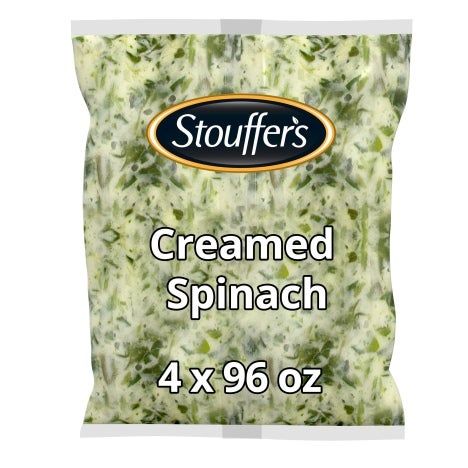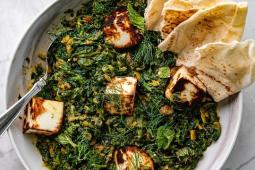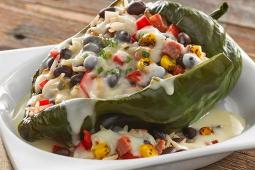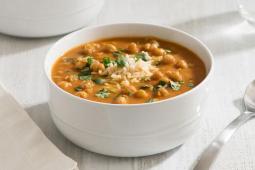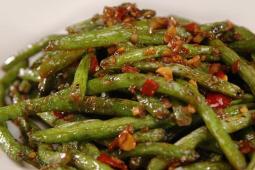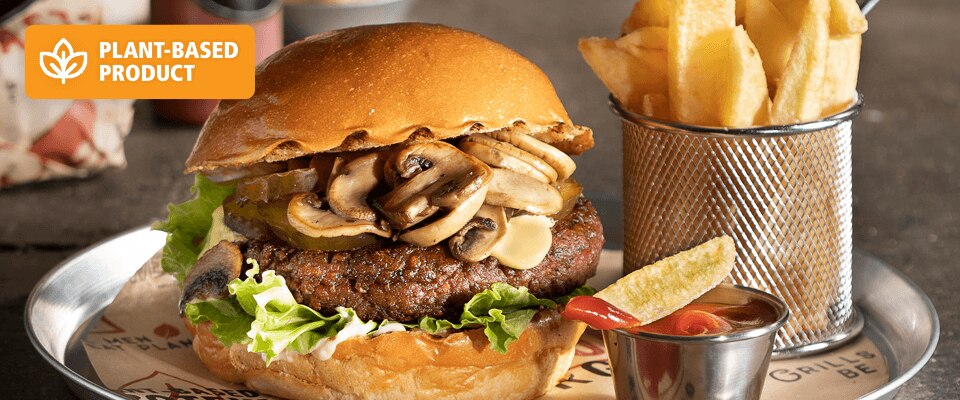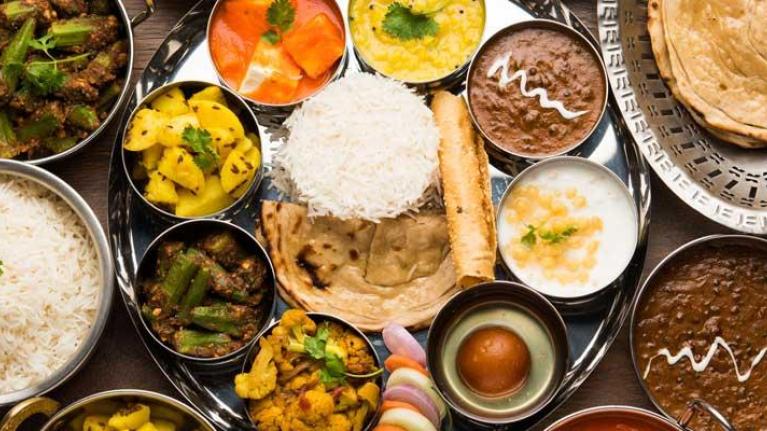
- Trends & Insights
- Plant Based
Blend Global Flavors Into Plant-Based Cooking
Enhance your plant-based offerings with flavor cues from India, Asia, Mexico, and the Mediterranean. Your patrons will love a touch of global interest.
Some of the greatest vegan and vegetarian food in the world comes from places like India, Mexico, Asia, the Mediterranean, and other great culinary cultures. Let these regions be the inspiration for exciting, flavorful recipes that emphasize fruits, vegetables, beans, grains, and other plant-based ingredients, rather than meat. In fact, in many countries, meat and other animal proteins are viewed as garnishes and flavor sources for diets that are based on plants.
According to Technomic, 49% of consumers somewhat or strongly agree that they prefer ethnic flavors over traditional flavors for plant-based foods, including 58% of those aged 18 to 34.
India
With more vegetarians than the rest of the world put together, India represents an exceptionally fertile source of inspiration for plant-based menu items. Many traditional Indian vegetable specialties can provide a touchpoint, including Aloo Gobi Masala (spiced cauliflower and potatoes), Baingan Bharta (eggplant curry), Vegetable Korma (a type of stew made with a variety of different vegetables), Palak Paneer (spinach and cheese), and Chana Masala (chickpeas and tomatoes). Together with Indian bread, chutney, and raita (yogurt with cucumbers), these flavorful vegetable dishes appeal to omnivores as well as vegetarian and vegan diners.
There are also a number of Indian rice dishes that are either meatless or include very little meat, such as biryani. This elegant mixed rice dish consists of basmati rice, cooked with spices like saffron, cardamom, turmeric, and ginger, mixed with onions, raisins, almonds, and vegetables such as cauliflower and string beans. Yogurt or coconut milk are used to add richness, and small amounts of meat such as chicken, lamb, or seafood can be added.
Mexico
Mexico’s reliance on both beans and corn- and wheat-based carriers like tortillas as well as flavorful chiles, herbs, and citrus makes the country’s cuisine a natural for plant-based menu ideas. Beyond the obvious combinations of rice and beans, burritos, tacos, tamales, enchiladas, and quesadillas are traditionally filled with such appealing ingredients as beans and cheese, lentils, calabacitas (squash), sweet potatoes, spinach and other greens, various mushrooms, and rajas (strips of poblano peppers enriched with crema and fresh cheese.
Although traditionally made with chicken, a hearty tortilla soup can be recast as a meatless specialty stocked with corn, peppers and onions, tomatoes, and avocado. Pozole, a satisfying soup/stew based on hominy, can be made without the usual pork or chicken, garnished with raw cabbage, radishes, cilantro, and avocado.
Look also to the stuffed poblano peppers known as chile rellenos, which are most often filled with vegetables and cheese.
China and Southeast Asia
Tofu, noodles, rice, stir-fried vegetables…what menu maker wouldn’t be inspired by the plant-forward cooking of China, Vietnam, and Thailand? In fact, in many of these countries, people consider meat as a flavoring or garnish, rather than the center of the plate.
Spicy, plant-based Chinese specialties like garlic noodles, mapo tofu, dan dan noodles, eggplant in garlic sauce, broccoli in oyster sauce, and hot and sour soup can be made with small amounts of meat or none at all. Buddha’s Delight is a colorful vegetarian stew that’s traditionally served to celebrate the Lunar New Year, but can be adapted to any day and almost any seasonal vegetable, including bok choy, shitake mushrooms, bean sprouts, and bamboo shoots, as well as cellophane noodles and tofu.
Pad Thai and curries (red, green, and yellow) can easily be made without meat, showcasing not only vegetables but also high-impact seasonings like galangal, lemongrass, ginger, chili and curry pastes, coconut, and tamarind. Green papaya salad combines this enticingly bracing fruit with sugar, chiles, garlic, soy, and lemon or lime juice.
Vietnamese food fans who eschew meat will enjoy vegetarian versions of bahn cuon (spring rolls); pho noodle soup; the lacy herb- and vegetable-packed pancakes known as banh xeo; comforting Cháo Đậu Xanh Chay (vegan porridge with mung beans); and banh mi sandwiches filled with tofu, fresh herbs, and pickled vegetables and jalapeños.
Mediterranean and the Middle East
The entire Med Rim region is home to exciting plant-based culinary traditions, from satisfying meatless Italian pastas (see below) and long-cooked Greek vegetable dishes, to newly trendy Lebanese, Israeli, and Moroccan specialties.
Greek cooks are pros at turning vegetables into complex and delicious meals, from rice-stuffed dolmas (grape leaves) and cabbage to flavorful vegetables such as stewed okra with tomatoes, baked beets with skordalia (garlic sauce), horta (braised greens), eggplant-rich moussaka, and bean dishes such as stewed favas and gigante (broad beans). Horiatiki is a traditional Greek salad that’s chockablock with cucumbers, tomatoes, olives, onions, and feta cheese, while spanakopita and tyropita comprise flaky phyllo dough layered with spinach and cheese, respectively.
The heart and soul of Middle Eastern cuisine are its vegetables, spices, and grains. Moroccan couscous and tagines (complex stews) highlight seasonal vegetables as diverse as pumpkin, sweet potatoes, zucchini, cabbage, cauliflower, green beans, fennel, and carrots, as well as dried fruits, nuts such as almonds, cumin, ginger, and the spicy seasoning known as harissa. Other specialties from this diaspora include hummus, falafel, tabbouleh, baba ghanoush (made from roasted eggplant), and mujadara (rice and lentils). Shakshuka is a flavorful sauce for poached or baked egg, made with tomatoes, peppers, onions, spices, and other ingredients.
Source: Technomic Inc., Ethnic Food & Beverage Consumer Trend Report (2018)
The information provided is based on a general industry overview, and is not specific to your business operation. Each business is unique and decisions related to your business should be made after consultation with appropriate experts.
Peruse any Italian cookbook and you’ll quickly find dozens of meatless pasta specialties that fit seamlessly into a plant-based menu section, including:
- Orecchiette with broccoli rabe and garlic
- Ricotta ravioli, with or without additions such as chard
- Artichoke, spinach, or zucchini lasagna
- Vegetable risotto
- Pasta fagioli (pasta with beans)
Nestlé Professional is doubling down in support of the plant-based menu trend with more products and recipes that feature vegetables, grains, nuts, and other ingredients.
Check out the lineup of vegetarian and vegan entrées and sides, sauces, flavor concentrates, and other products here.
And a new section of Plant-Forward and Vegetable-Centric Recipes will help you select exciting appetizers, small plates, snacks, soups, entrées, and side dishes that address flexitarian lifestyle trends.
